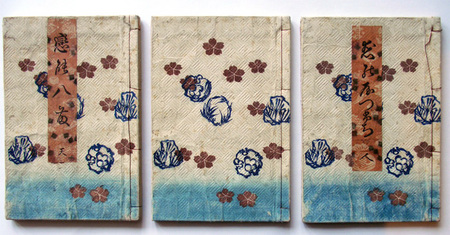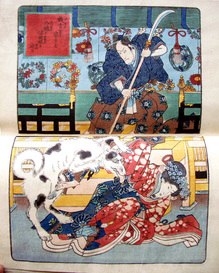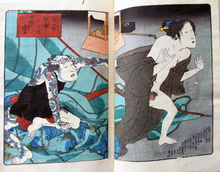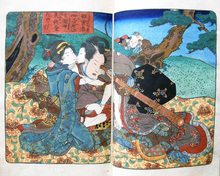Utagawa Toyokuni III (Utagawa Kunisada 1786-1865), Koi No Yatsu Fuji (Edo, ca. 1870). Graphic Arts Collection 2012- in process
“Koi no Yatsu Fuji, published at the New Year in 1837, is a shunga version of Satomi Hakken-den, the most representative work of Kyokutei Bakin (also known as Kyokutei Shujin), originally published in 1814-42. Both its text and illustrations are clever parodies of the original work. The author’s name is given as Kyokudori Shujin, a perversion of
Utagawa Kunisada (later Utagawa Toyokuni III, 1786-1864) was the Andy Warhol of his day. He was the most popular, most copied, and most financially successful artist of that period. As a young man, he apprenticed with Toyokuni, later having the honor of taking that master printer’s name. Experts estimate Kunisada’s total work to be over 20,000 prints.
Many of the Shunga (erotic) prints and books in this country are in the backrooms of art museums and library, carefully housed and controlled by shy librarians. This is only the second such volume to enter Princeton University Library but an important example of a significant genre. The date of this edition is only a guess, there is no date inside the volume.




